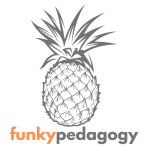“In my writing life, I seem to have navigated an odd course between fiction and its negation, always half-wishing when I’m immersed in one that I were embarked on the other. I want the free flight of story when I’m hunkered down in facts and wish for a character who could offer a statement contradicted by another character. On the other hand, when I’m writing fiction, I often enough find myself wishing that I could fill the blank page with some meaty matter..”
Lisa Appignanesi, reported in The Guardian (2012)
For me, this quote sums up a lot of what non-fiction writing really is about: having the ability to
present honest ideas that can challenge, while also using the deftness of literary language to
emotionally engage a reader, and to take them on a journey. I will never forget the mark left on
me by Helen MacDonald’s H is for Hawk, as a book seemingly about birds of prey became a
beautiful and powerful account of personal grief. Why then do we so often teach students to
eschew so many of the wonderful devices that they have discussed in literature and practised in
their creative writing in favour of, dare I say it, DAFORREST?
Now, to be fair, DAFORREST can have its place, but in my time examining, it has become clear
that the students who truly excel in non-fiction writing are those that use their knowledge of
fiction writing. Indeed, many carefully chosen Paper 2 texts help students explore this in
question 3, where often there is not much to say about a statistic, but a huge amount that could
be said about metaphor. Take this example from H is for Hawk:
“You see that life will become a thing made of holes. Absences. Losses. Things that were there
and are no longer. And you realise, too, that you have to grow around and between the gaps,
though you can put your hand out to where things were and feel that tense, shining dullness of
the space where the memories are.”
Over the last year, as part of writing our new curriculum, I have been focusing on teaching
students to use traditionally ‘fictional’ devices in their non-fiction writing.
The biggest ‘quick fix’ for students’ non-fiction writing however, came from re-considering the
structure of their work. Instead of a set-up of: introduction, argument 1, argument 2, counter-
argument, synthesis, conclusion, we have moved instead to a structure more akin to Freytag’s
analysis of dramatic structure. Our students are taught this explicitly in their first units of Year 7
(normally recognising elements of it from story mountain in their earlier education) in the context
of story writing.
In year 8, we then take this knowledge and begin to apply it to their non-fiction writing. We re-
visit the structure and consider how the terms that we have learned previously could be applied
to a letter. We initially just focus on exposition, climax and denouement.
Immediately, the emotional connection was made where it was simply lacking before. These were no longer letters that just recited beliefs, or rehashed facts and statistics, but letters that would encourage empathy and understanding from a reader.
We then continue to develop this as students progress in their English Language studies, and by Year 10 are using each aspect of the dramatic structure (here with the addition of a call back to focus on the spoken element of speeches).
We are also using models that exemplify
this structure, and apply it to looking at
other non-fiction texts, so that students
begin to realise the ways in which the
techniques used in fiction and non-fiction
can merge. The models also have an
exaggerated focus on devices such as
metaphor to really illustrate to students that it is fine to use these in their non-fiction work! An example of this can be seen in our year 10 speech writing unit.
Although we are a new school, and so will not see if this change in tactic results in higher marks on Paper 2, question 5 any time soon, I personally believe that there has been an improvement in students’ non-fiction writing. Breaking it down structurally has worked particularly well for some of our LPA cohort. Fingers crossed for Summer 2022!
References:
https://www.theguardian.com/books/2012/sep/21/literary-nonfiction-the-facts
MacDonald, H. – H Is For Hawk (2014) Jonathan Cape.


